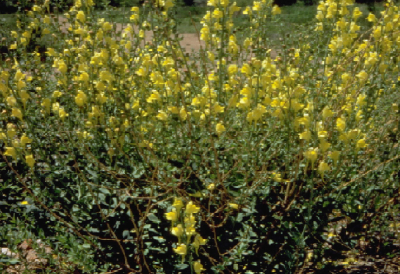Dalmatian Toadflax Noxious Weed
It’s easy for one Dalmatian toadflax noxious weed to become 101, but there’s no loving couple desperately searching for them and no evil villainess trying to capture them for her own nefarious use.
Also known wild snapdragon, Dalmatian toadflax noxious weed originally made its way to the United States in the 1600s as an ornamental plant, a natural fabric dye and a folk remedy. The plant was said to be effective in treating sores on the skin and throat and neck maladies. Early introduction to the western U.S. is attributed to it being part of the possessions transported via covered wagon.
Dalmatian Toadflax Noxious Weed Description
Because one plant can have up to a half a million seeds and it can multiply by sending root runners underground, it’s no surprise the Dalmatian toadflax noxious weed has found itself on a most wanted list: Colorado’s noxious weeds. Left to its own devices, the plant will choke out everything in its path.
There’s no denying the loveliness of Dalmatian toadflax noxious weed. It grows erect to three feet tall with waxy leaves and yellow flowers with an accent of orange. The plant blooms from early summer through fall, making it one of the showiest members of a home garden. Dried arrangements that contain Dalmatian toadflax can last for nearly two years and when thrown on the compost pile, dormant seeds spring to life.
Seeds from the plant are offered in seed catalogs and often sold in farmers markets around the country as a naturalizing ornamental plant. Even in Colorado, the Colorado State Patrol frequently stops residents from digging up roadside plants with the intention of replanting at home.
Do you suspect the presence of Dalmatian toadflax noxious weed on your property? Contact SprayTech, Colorado commercial and residential noxious weed control experts, at 720-248-0000 to discuss weed control options.


